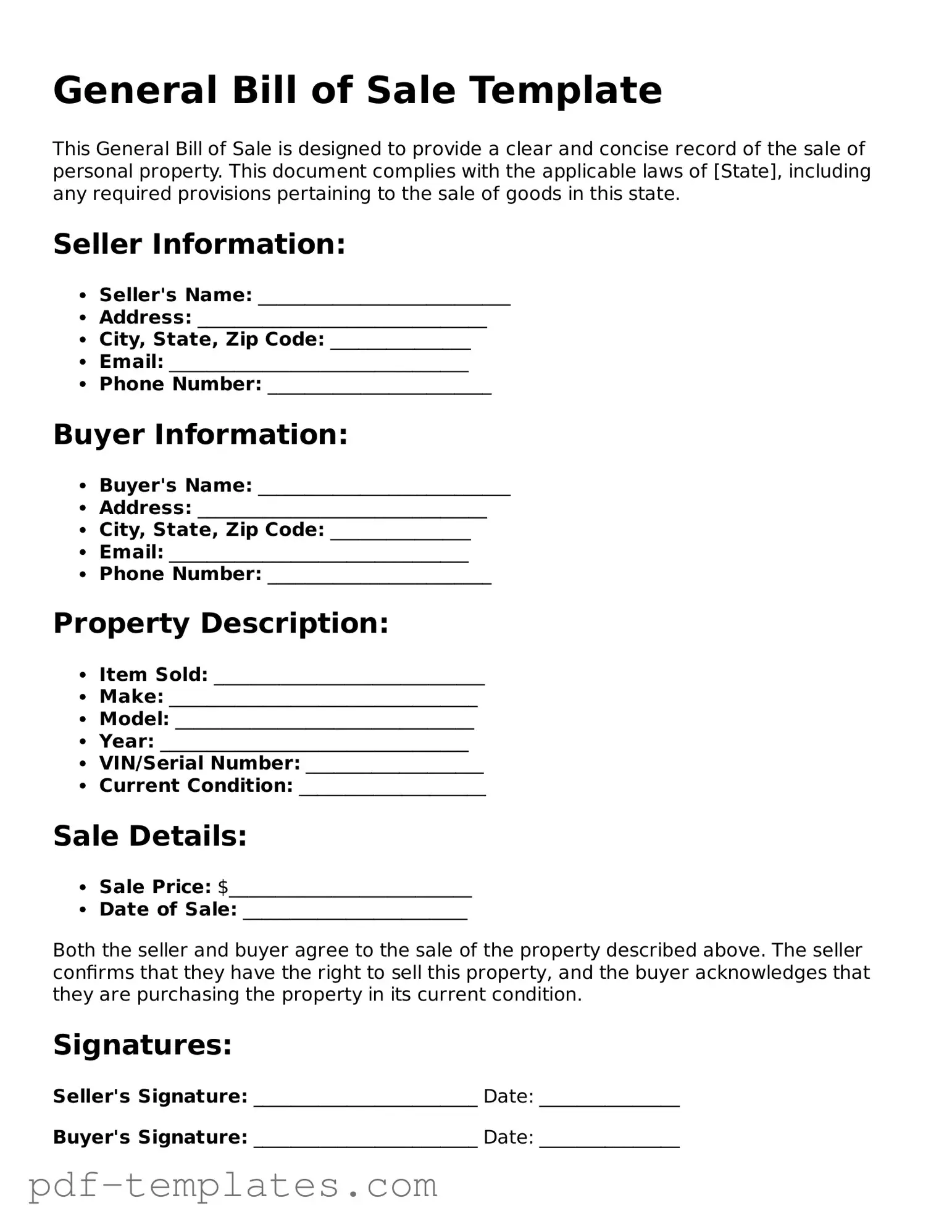The General Bill of Sale is a document that serves as a receipt for the transfer of ownership of personal property. It is similar to a Vehicle Bill of Sale, which specifically pertains to the sale of motor vehicles. Both documents provide details about the buyer, seller, and the item being sold, including its condition and sale price. The Vehicle Bill of Sale may also include additional information such as the vehicle identification number (VIN) and odometer reading, which are critical for registering the vehicle with the state.
Another document akin to the General Bill of Sale is the Equipment Bill of Sale. This form is used when transferring ownership of heavy machinery or equipment. Like the General Bill of Sale, it outlines the parties involved and provides a description of the equipment, including its serial number and condition. This document often includes warranties or disclaimers regarding the equipment's functionality, making it essential for both buyers and sellers to understand their rights and responsibilities.
The Personal Property Bill of Sale is also similar, as it covers the sale of various types of personal property, such as furniture or electronics. This document, like the General Bill of Sale, specifies the details of the transaction, including the item’s description and purchase price. It may also contain clauses regarding the condition of the item and any warranties offered by the seller, ensuring that both parties have a clear understanding of the sale.
In the realm of real estate, the Real Estate Purchase Agreement shares similarities with the General Bill of Sale, though it is specifically tailored for real property transactions. This document outlines the terms of sale, including the purchase price and any contingencies. While the General Bill of Sale is often used for personal property, the Real Estate Purchase Agreement is more comprehensive, detailing legal obligations and timelines for closing the sale.
The Lease Agreement is another document that, while not a sale, shares similarities in that it outlines the terms under which property is rented. Both documents require clear identification of the parties involved and a description of the property. The Lease Agreement specifies the rental terms, duration, and payment details, while the General Bill of Sale focuses on the transfer of ownership, highlighting the different nature of the transactions.
A Gift Receipt is also comparable to the General Bill of Sale, as it provides proof of the transfer of ownership without an exchange of money. This document details the item being gifted and identifies the giver and recipient. While a General Bill of Sale typically involves a purchase, a Gift Receipt emphasizes the voluntary nature of the transfer, making it important for tax purposes and personal record-keeping.
The Inventory List serves a different purpose but is similar in that it documents items owned by an individual or entity. This list may accompany a General Bill of Sale when multiple items are sold together, providing a comprehensive overview of what is included in the transaction. While the Inventory List does not transfer ownership on its own, it can be used as a reference to clarify what items were sold and their condition at the time of sale.
Finally, the Affidavit of Ownership is a document that can accompany a General Bill of Sale, particularly in cases where proof of ownership is required. This affidavit asserts that the seller is the rightful owner of the item being sold. While the General Bill of Sale serves as a receipt for the transaction, the Affidavit of Ownership may be necessary to establish the seller's legal right to sell the property, providing an additional layer of protection for the buyer.
